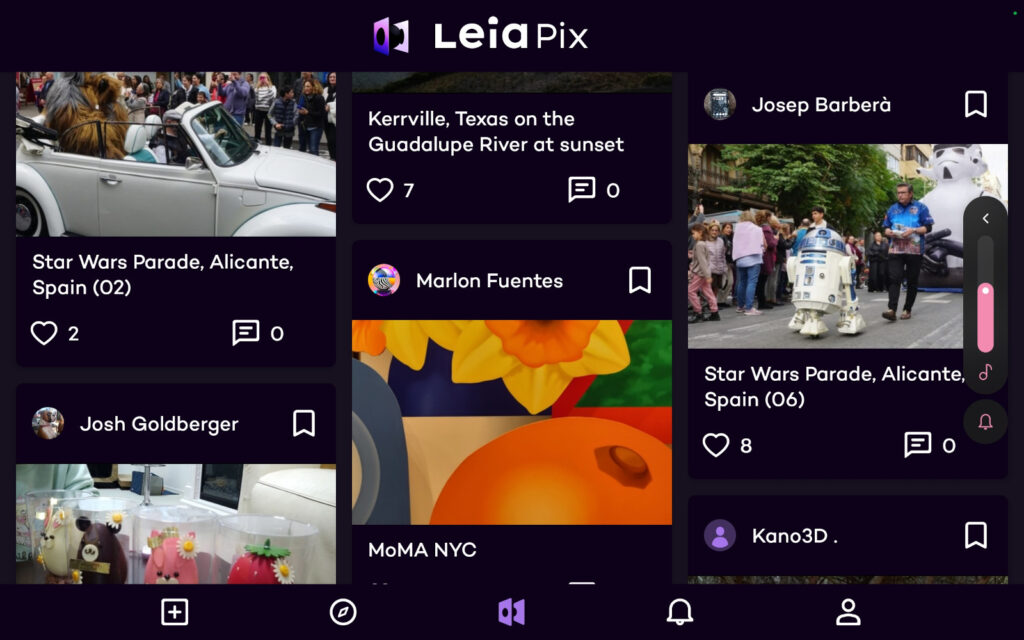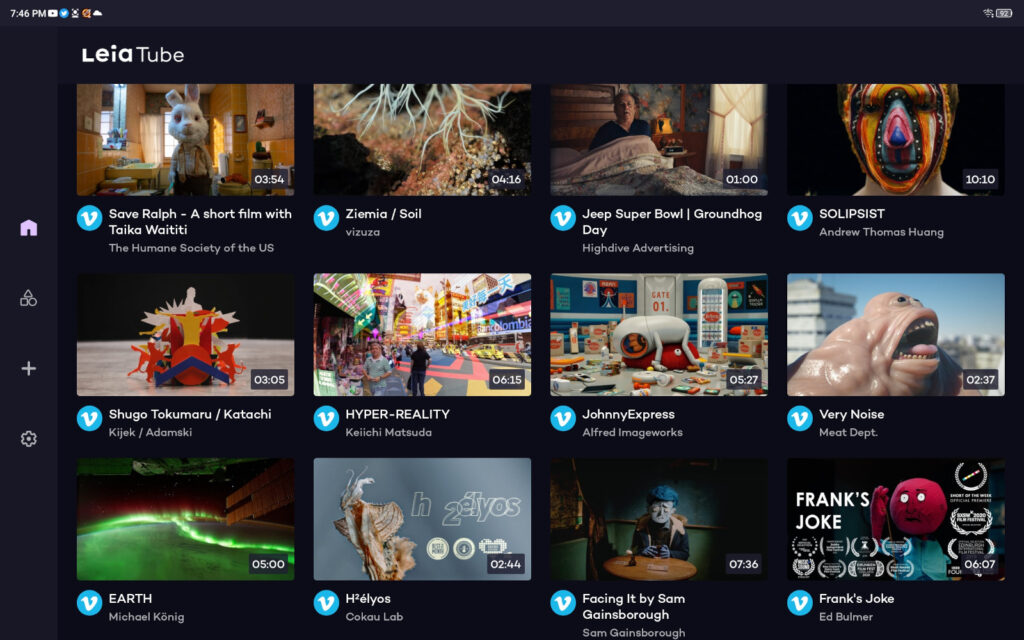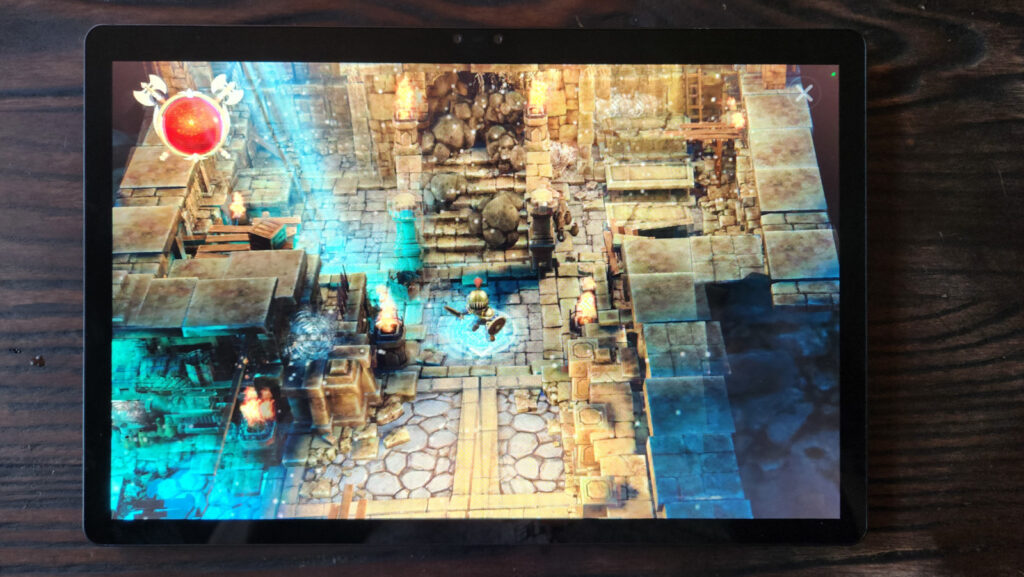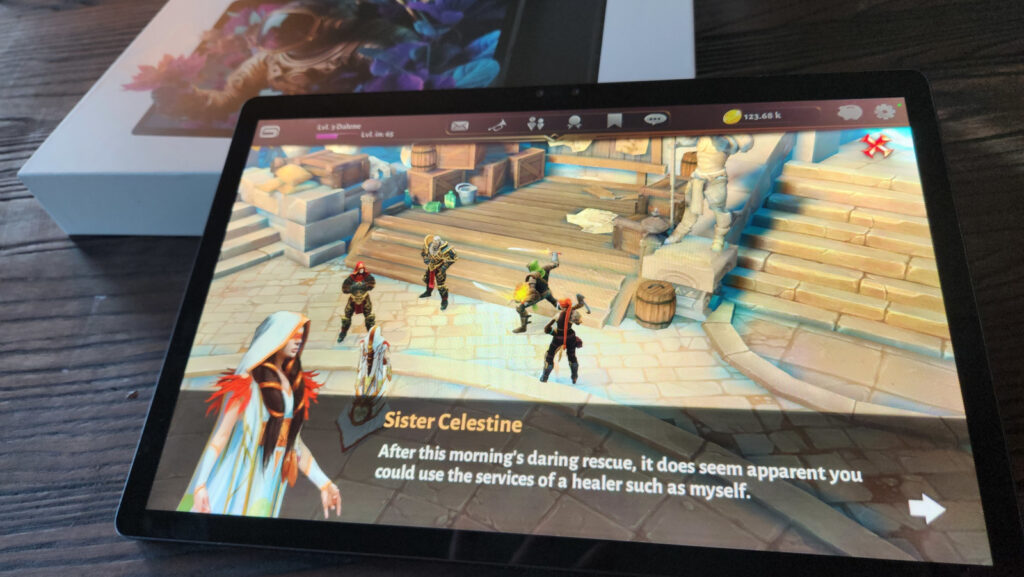Review: Lume Pad 2 – World’s First 3D Tablet Powered by AI

I recently got myself a Leia Lume Pad 2, and I’ve had about a week to test it out. Let me just start by saying this is the most significant advance in consumer electronics in years. Probably since VR hit the consumer market. It’s a high-end 12″ Android tablet, but with a display that can show beautiful stereoscopic 3D images, all while not needing glasses. Supposedly it works with nano-technology, which I’m not sure what that means, but the idea is that it can redirect light to each eye individually. Meaning you can get a full 3D image without using shutter glasses or needing a VR headset. And it works. It basically looks like a hologram, given the right content. The experience is somewhat similar to the Nintendo 3DS, if you remember that, but it uses different technology and is certainly improved. First, it has a high definition display, 2560 x 1600 at 120Hz, and looks sharp and vibrant. Though the screen does dim slightly in 3D mode, it is much brighter than typical shutter glasses. The resolution also gets split between the eyes, though still looks nice and in HD. In addition, there are head tracking stereo cameras, which can track the position of your eyes and adjust the sweet spot, as well as move the in-game camera (in supported games). The result is that the stereo image stays solid even while moving your head slightly (unlike the original version of the Nintendo 3DS). Granted, you won’t want to move your head too fast, but under normal viewing conditions it works well. I was also surprised at the low amount of cross-talk (aka “ghosting”). On occasion it is visible (especially with contrasting colors like black and white), but in most cases it looks great. There is a lot of depth to the display and even pop-out. Definitely one of the best experiences I’ve had for this type of technology. Unfortunately, there is not an easy way to demonstrate the effect on a 2D monitor, so you’ll have to take my word.

Here is one of the photos I found on the LeiaPix social network. On there you can share 3D images and it has the basic features like following other users and liking images. I would estimate there are likely thousands of stereo photos on the network, and you can easily scroll through and even see the thumbnails in 3D. Since this is user generated content, the quality can vary from professional photographers to hobbyists, but there’s a lot of great stuff there. You can also capture 5K 3D photos from the tablet itself and upload directly to LeiaPix without using a computer. You can see the interface below. It’s no-frills, but it works.

Below you can see a photo captured with the built-in stereo camera. I’ve included both the 2D capture, so you can easily see the image quality on the web, and also a 3D side-by-side (SBS) image you can load into another stereo solution (just note that the image has been slightly compressed).
Beyond photo content, they also have tons of videos in 3D. You can rent movies that were native 3D in the theater for a few dollars, and there are some big blockbusters on there. There is also LeiaTube, which uses AI to convert 2D social media videos into 3D, from popular sites like YouTube and Vimeo. While this is a 2D to 3D conversion, their algorithm is very good, probably the best I’ve seen for real time, and helps fill in a major gap that plagued 3D solutions of the past. You can also copy 2D images and videos (in standard formats like JPG or MP4) onto the tablet and it will convert them to 3D within a few seconds. Depending on the content, the quality can be decent to amazing. I’ve seen some minor artifacts with the conversion, with certain content, but in some cases it can look as good as native. So the quality is variable, but, more often than not, it’s very good.

Likely the most impressive piece of content I witnessed was the dungeon demo that comes with the tablet. This is not a full game, but a short tech demo to show all the features. In it you can control a knight character in a fantasy dungeon in full 3D. But the most important aspect is the head-tracking. Basically you can hold the tablet still in front of you and move your head within a small box and it positions the camera in the game to be the correct angle. You can also rotate the tablet at the same time, and everything is updated naturally as you would expect. This is very similar to a lot of those Desktop VR and smartphone AR demos, but actually fully functional in a consumer product you can buy. It really has to be seen to be believed, the video below does not do it justice.
Here is a photo of the tech demo, though it appears blurry in 2D since my phone is capturing part of what each eye is supposed to see. In actual use it looks crisp and clear. Note, the screen uses a sort of interlaced or checkerboard pattern in 3D. I suspect the resolution per eye is around 800P, so still HD.

You will have full access to the Google Play Store to download 2D apps and games, but for 3D content Leia has their own store and app ecosystem. I’ve only covered a few of the apps included, but you can also do 3D video chat, assuming you and the other person both have the tablet. I tested this and it’s a pretty cool experience. Granted, the video feed was a bit compressed (it depends on your internet connection) but the 3D effect was very nice. There are some games on the app store, but I found the selection to be somewhat limited. The biggest game is a fantasy RPG from Gameloft, most of the other titles I tried were smaller indie games. That said, the tablet has just released not even a week ago, so I’m sure the ecosystem will grow as developers get their hands on this and see it for themselves.

Overall I could not be more happy with the purchase. It basically looks like a hologram, the future is here. That said, this is a flagship 12″ Android tablet and does not come cheap. Currently it sells for $1,099 on the US market (international is coming soon). But compared to other options in this class, such as from Samsung or Apple, there is not much of a premium for the 3D screen. This is a genuinely new and innovative product, especially considering the dearth of 3D displays in recent years. While VR is still popular these days, this is more of a casual experience. You can sit on your couch and browse some stereo photos, watch YouTube in 3D, or play a game without any glasses or cumbersome setup. It’s very quick to jump into, and also doubles as one of the better 2D Android tablets you can buy, if you just want to scroll on Twitter, or whatever. I seriously cannot remember when I was more excited for a consumer gadget. You don’t want to miss this.
Learn more at: https://www.leiainc.com (I don’t get paid for this, I just really love this tablet.)

